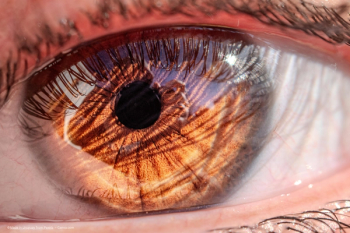
Controlling primary congenital glaucoma
Primary congenital glaucoma is usually controlled with surgery, however, in a recent paper it has been demonstrated that long-term treatment with latanoprost 0.005% eyedrops is effective in about 30% of affected eyes.
In a recent study,3 some of my peers and I found that long-term treatment with latanoprost 0.005% eyedrops is effective in about 30% of the eyes affected with PCG. Here, I will present an overview of this study, hihlighting the key outcomes.
The study
We started the use of latanoprost in paediatric patients in 1997, and presented our first results at ARVO congress in 2003.4
The parameters evaluated at the study visit, and retrospectively from clinical charts were:
In patients treated at an age of lower than 12 months, a glaucoma severity scale (accounting for corneal diameter, corneal clarity, IOP value) was employed.
Therapy was started at a visit as an outpatient (when biomicroscopy, IOP assessment, fundus examination with optic nerve head evaluation were performed), or at a control under general anaesthesia (including also gonioscopy, corneal diameters measurement and ocular diameters evaluation by standardized A-scan echography).
In older children, usual glaucoma assessment - with visual field and RNFL thickness measurement - was performed.
After starting latanoprost treatment, patients were then re-examined at the first month and then every 2–3 months. In cases of uncontrolled glaucoma (high IOP, progressive ocular diameter enlargement, increase in cup–disc ratio of 0.2 or more, progression of visual field damage in older children) patients received surgery or, if not contraindicated by age, additional medical therapy.
Outcomes
The outcomes considered in the study were:
At the study visit, among the eyes (n = 81) that had received latanoprost as primary treatment, after a mean follow up of 88 ± 45 months, 24 eyes (29.6%) had glaucoma controlled by latanoprost therapy, while 57 eyes (70.4%) had received surgery, most of them - 45 eyes (55.6%) - during the first year of treatment.
Among the eyes with previous surgery (n = 42), after a mean follow up of 123 ± 35 months, success was found in 12 eyes (28.6%), 13 eyes (31%) required an additional therapy (topical brinzolamide, or latanoprost-timolol fixed combination) and 17 eyes (40.5%) had received further glaucoma surgery.
Multivariate analysis showed that factors related to the success of the treatment were the high score of severity of glaucoma (p = 0.014) and low age at PCG presentation (0.042).
No patient discontinued the treatment because of side effects, which included only some cases of conjunctival hyperaemia (in 4 eyes), increase of iris pigmentation and eyelash changes (in one eye), and the upper airways irritation (in one patient, regressed with systematic manual nasolacrimal occlusion on instillation).
Conclusions
Treatment with latanoprost can be used in patients with PCG, at the diagnosis, or waiting for surgery; if glaucoma is controlled by therapy, topical treatment can be continued; in case of uncontrolled glaucoma, latanoprost treatment does not interfere with surgery. Close follow-up of the patients during the treatment is mandatory to assess glaucoma evolution and need of surgery.
Treatment allowed us to avoid surgery (or postpone surgery) in about 30% of the eyes that we had treated as first-line.
In eyes that had received a previous surgery, also because of a greater age at the treatment, surgery could be avoided in 70% of the eyes, by latanoprost, or by adjunctive therapy.
As other hypotonizing agents (topical beta-blockers and alpha-agonists, systemic carbonic anhydrase inhibitors) have greater systemic side effects and are often contraindicated in paediatric age, treatment with topical latanoprost can be offered, as an option, to these young patients to control PCG.
Acknowledgement
This article highlights a recently published study: M.G. Uva, T. Avitabile, M. Reibaldi, C. Bucolo, F. Drago, L. Quaranta, E. Lionetti and A. Longo, 'Long-term efficacy of latanoprost in promary congenital glaucoma', Eye (Lond.), 2014;28:53–57. doi:10.1038/eye.2013.232
References
1. M.S. Passo, E.A. Palmer and E.M. Van Buskirk, Ophthalmology, 1984;91:1361–1363.
2. Y. Levy and D. Zadok, Clin. Pediatr., 2004;43:99–101.
3. M.G. Uva et al., Eye (Lond.), 2014;28:53–57.
4. M.G. Uva MG et al., Invest. Ophthalmol. Vis. Sci., 2003;44, E-Abstract 2163.
Newsletter
Get the essential updates shaping the future of pharma manufacturing and compliance—subscribe today to Pharmaceutical Technology and never miss a breakthrough.












































